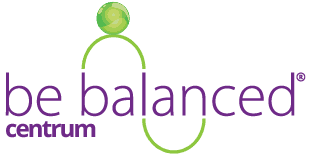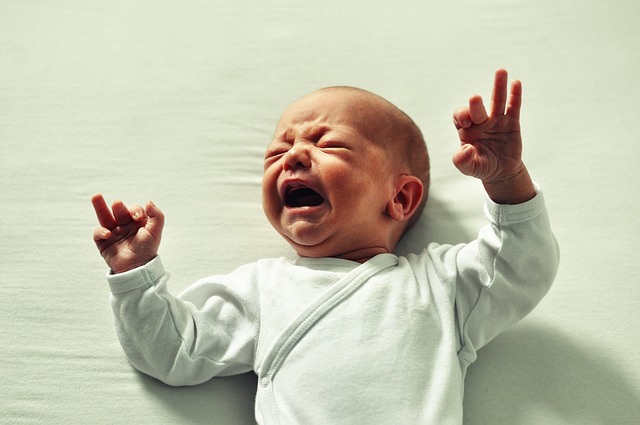Predilekce hlavičky u miminka aneb proč se kouká stále jen na jednu stranu?
Preference držení hlavičky do jedné strany, tzv. predilekce, je asi nejčastějším problémem, s kterým přicházejí rodiče se svým miminkem do ordinace fyzioterapeuta. V první řadě je potřeba říct, že u novorozence do stáří zhruba šesti týdnů je určitá asymetrie a tudíž i větší obliba jedné strany fyziologická a není potřeba se toho obávat. Tato asymetrie ale nesmí být stále, tedy miminko ji musí umět alespoň občas změnit, tedy hlavičku otočit na druhou stranu a to v plném rozsahu. Po šestém týdnu věku s optickou fixací by již dítě mělo umět otáčet hlavičku symetricky a žádnou stranu nepreferovat!
Pokud dítě i nadále drží hlavu více jen jedné straně – v mírném záklonu, úklonu a rotaci do strany druhé, hrozí rozvoj tzv. syndromu šikmého krku. Proto je třeba začít jednat nejlépe ihned a navštívit ordinaci fyzioterapeuta zabývajícího se touto problematikou. Dítě si totiž rychle tuto asymetrii fixuje v mozku a blokuje si tak start ideálního vývoje vytvářením náhradních pohybových stereotypů, které se pak mění tím obtížněji, čím je dítě starší a má je více zažité.
Nevěřte tedy tomu, že dítě z toho vyroste. Ano, možná to postupně budete pozorovat méně, ovšem za cenu posunutí asymetrie níže, do oblasti pánve.
Jako další projev syndromu šikmého krku můžeme pozorovat, že má problém hlavičku otočit do druhé strany a když už se mu to povede, tak je s rotací hlavičky spojen i úklon celého trupu k té straně, kam se otáčí a má problém ji tam udržet. Problém tedy už zasáhl i trup, břišní svaly se nemohou dobře zapojit, což se může projevit třeba ublinkáváním a plynatostí, neboť na střeva nepůsobí správný nitrobřišní tlak. Hlavička často začne být zploštělá a na záhlaví, kde miminko stále leží, je i méně vlasů. Asymetrie se postupně může objevit i na obličeji a v horších případech i na poruše sluchu na straně, kde ucho doléhá stále na podložku. Celá tato situace vede k opožděnému a nekvalitnímu vzpřimování, asymetrie trupu a pánve může být zdrojem asymetrického zrání kyčelních kloubů a vývoje skoliotického držení.
Příčinou predilekce může být např. porodní trauma, které vede k poranění měkkých tkání v oblasti šíje a hlavy, které často nemusí být na první pohled nijak patrné a může ujít pozornosti porodníka i pediatra. Dítě se pak často bývá více plačtivé a někdy bývá označováno jako neurotické. Je třeba si uvědomit, že pláč je jediný možný způsob komunikace dítěte a je potřeba se mu naučit rozumět. Bolest či jen určitý dyskomfort v oblasti šíje může mít negativní vliv i na usínání. Děti často pláčou ze spánku, nemohou najít vhodnou polohu pro spánek a rodiče neznalí problému ve snaze své dítě ukonejšit jej nosí celou noc na rukách a natřásají ho v náručí frustrovaní z toho, že pláče bezdůvodně. Je potřeba si uvědomit, že toto zacházení může celý problém ještě zhoršit. Problém se může objevit i na poli příjmu potravy. Protože je rotace hlavičku na jednu stranu bolestivá, nebo nejde, dítě bude sát raději z jednoho prsu a z druhého bude odmítat.
Pasivní otáčení hlavičky problém spíše zhoršuje!
Někdy se může dítě do větších problémů dostat paradoxně právě proto, že si toho, že je hlava jen k jedné straně, rodiče nebo lékař všimnou a je jim doporučeno hlavu pasivně otáčet a nutit dítě provádět činnosti ze strany druhé, aby se to tzv. naučilo i ze strany druhé. Dítě pak prožívá další bolest a pořádně se nenají a je více a více frustrováno a může trpět i chronickou únavou z nedostatku spánku. Metodou volby v terapii tohoto stavu je Reflexní lokomoce podle Vojty. Při tomto cvičení je hlavička naváděna do rotace reflexně vlastní aktivitou svalů, díky které se uvolní blokáda krční páteře a změní koordinace svalů krční páteře. V případě, že se jedná o blokádu krční páteře způsobenou tlakem na krční páteř při porodu, pomáhá dobře manuální léčba. Pod vlivem terapie se situace vždy zlepší a dítě polohu postupně srovná.
V průběhu vývoje je možné, že bude docházet k mírným zhoršením ve chvílích, kdy dítě začne používat vyšší pohybový vývojový vzor, třeba se postaví na čtyři. Dítě je stále potřeba sledovat, případně fyzioterapii vysazovat velmi pomalu, jinak by mohlo docházet k recidivám.
Jedním z častých důvodů predilekce či šikmého krku je také Kiss syndrom. Více si přečtěte zde: Léčíme KISS SYNDROM u dětí!

